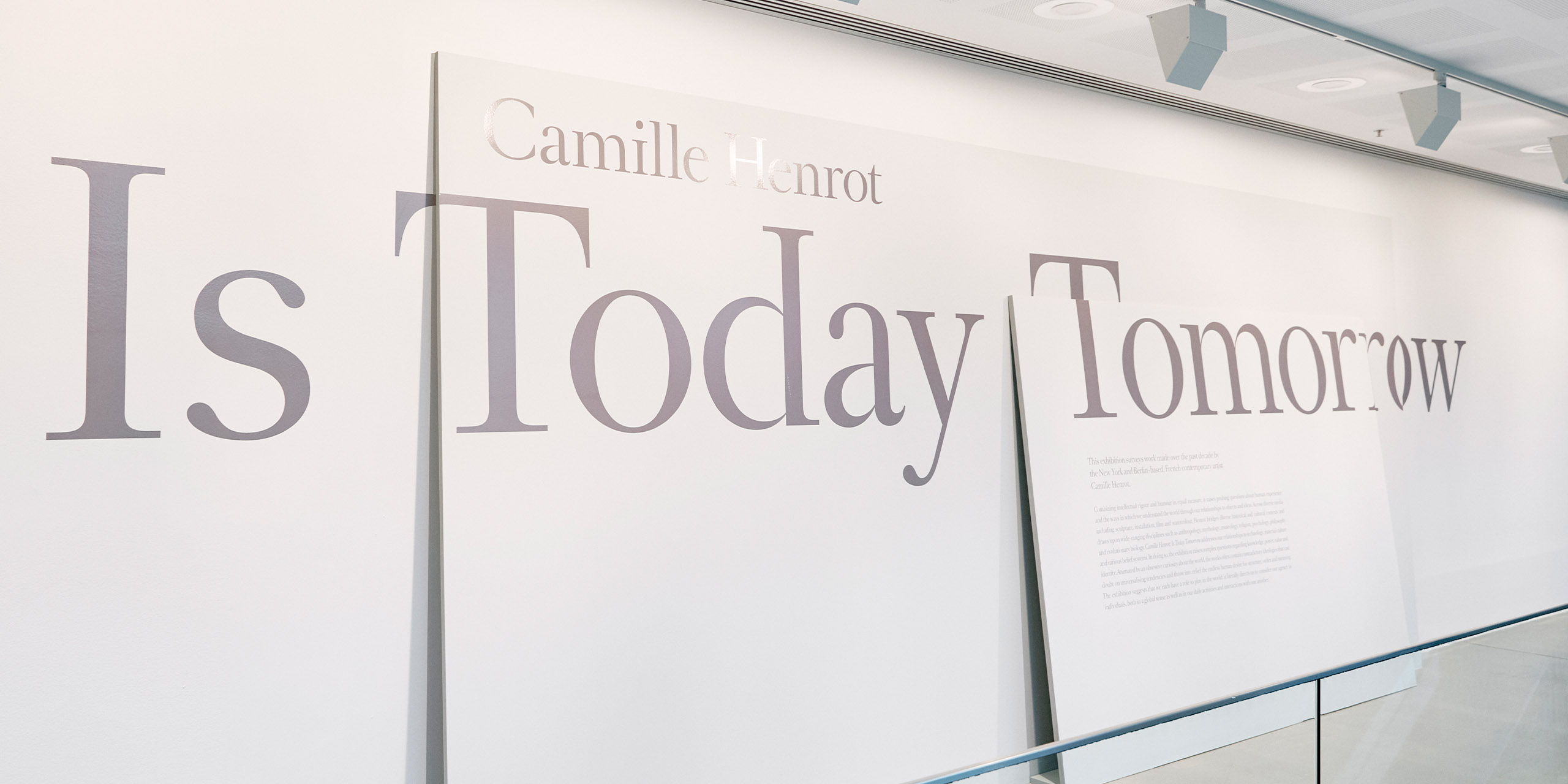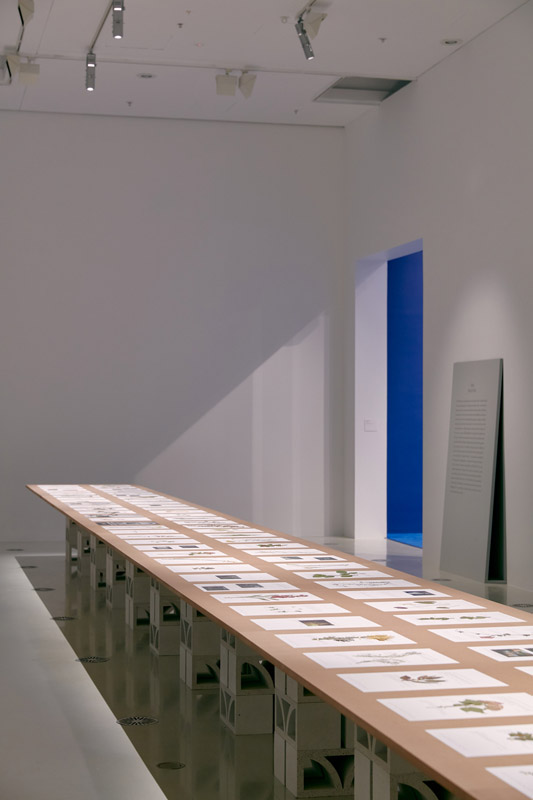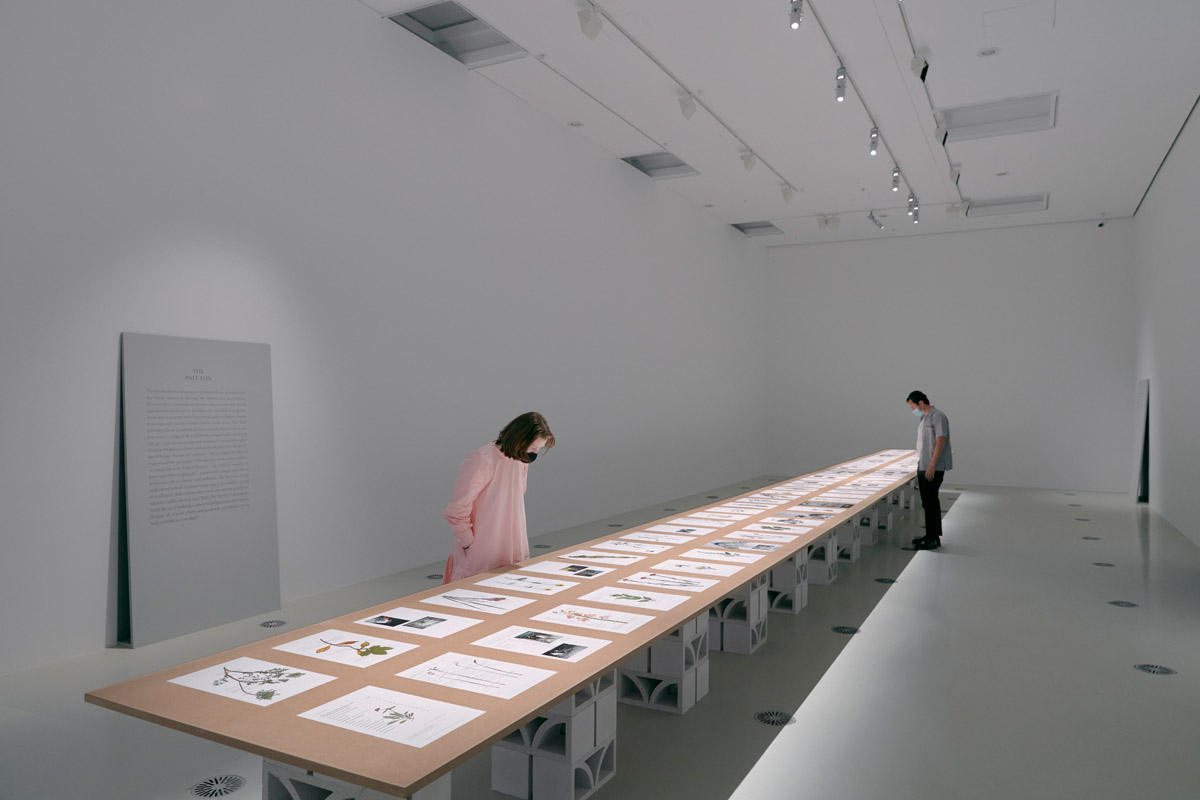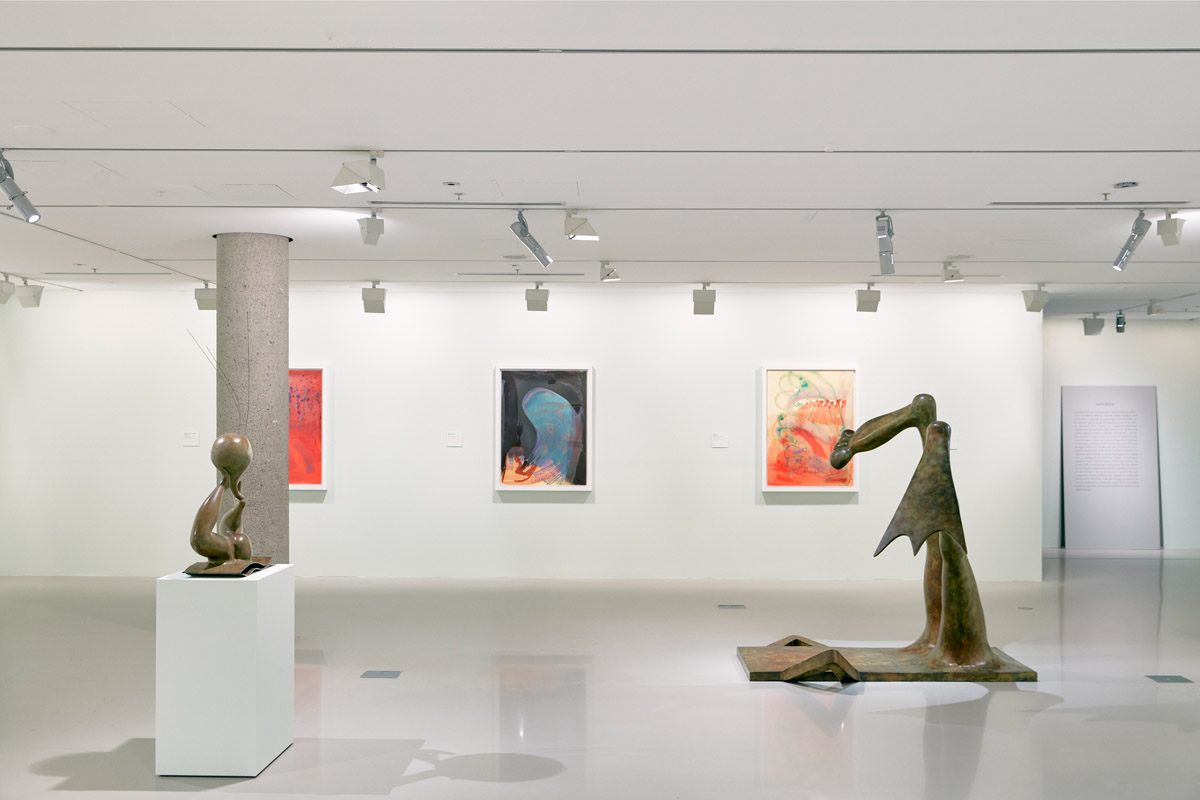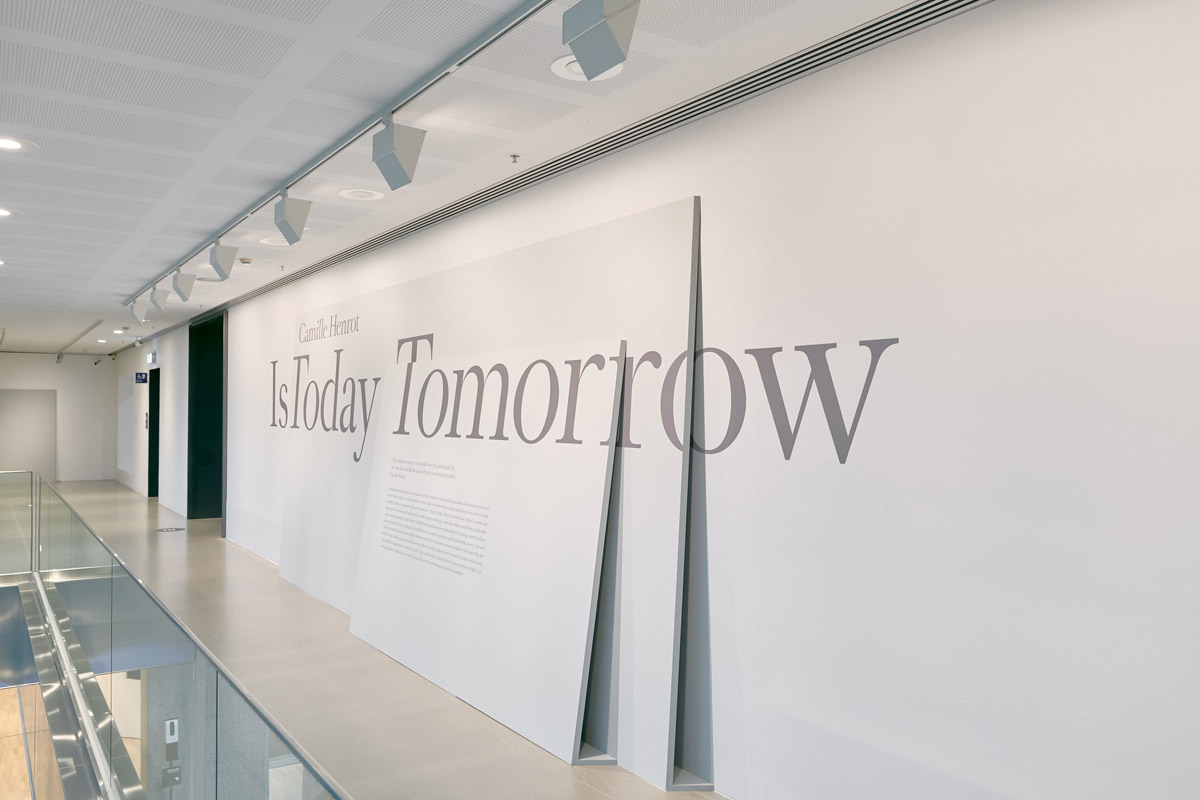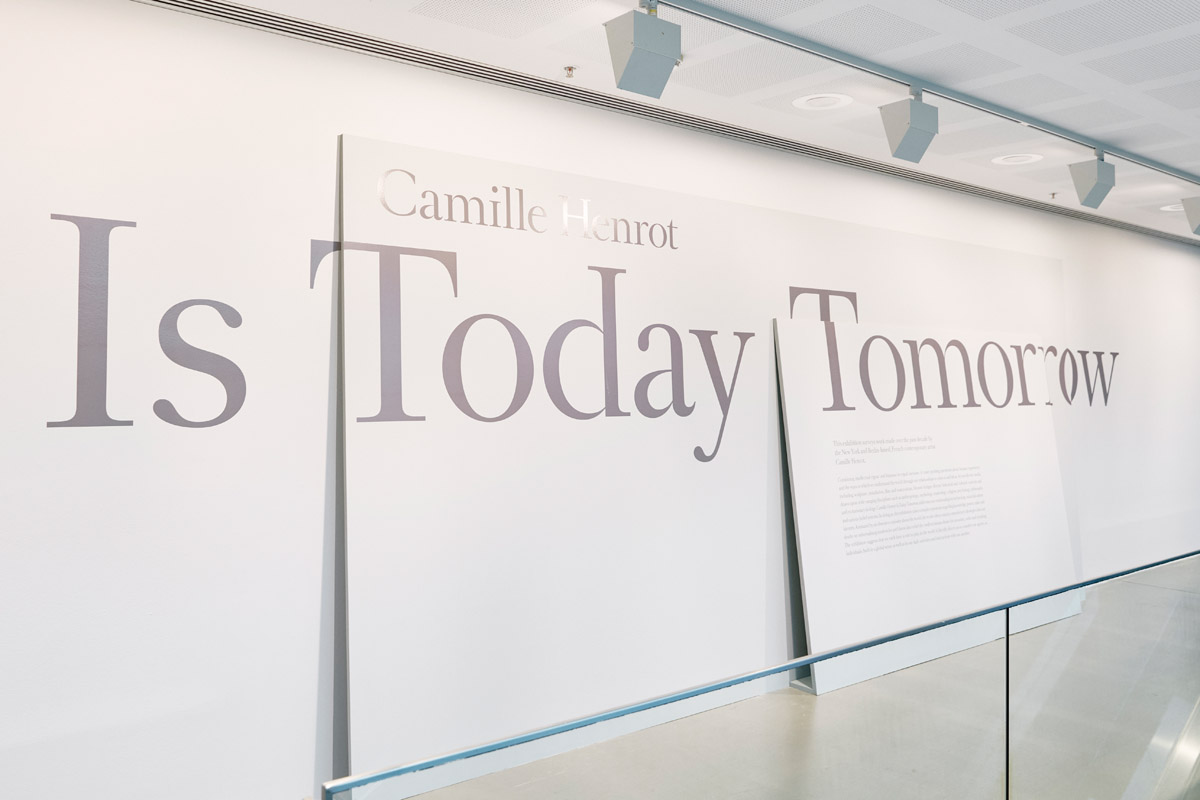The design addresses each text as if it were a single folio leaf and typeset according to traditional canons of book design which are rooted in early medieval manuscript production. Using some of Camille Henrot’s philosophical underpinnings – centred around her interests in Leibniz – we specified typefaces whose formal design foundations are rooted in the Enlightenment period and are of French origin. Typefaces designed during the Enlightenment tend to be anchored to rationalist principals. These typefaces are considered transitional, somewhere between an ‘old style’ and the modern types of the later nineteenth century. The letterforms used draw a fine line between classic and contemporary and have some interesting idiosyncrasies present. The general handling of the typefaces gestures towards traditional typesetting present in encyclopaedias which resonate with Henrot’s literary and archival references. These typefaces are contemporary re-readings of historical forms, and remnants of archival artefacts. The typefaces are chosen to embody some of the key defining aspects of Henrot’s work: excessive curiosity and an excess of principals. The design response highlights tensions between contemporary graphic design and traditional historical forms and methods of reproduction. This multi-modal response looks not only to the conceptual underpinning, but also to the form; bringing in pluralistic ways to reinterpret the conceptual/material relations already present, and in turn, to use design to create new relationships.
Exhibition graphics for the NGV exhibition Camille Henrot: Is Today Tomorrow, responding to the artist's work and use of assemblage.
Exhibition graphics for the NGV exhibition Camille Henrot: Is Today Tomorrow, including way-finding, title wall, labels and didactics. The graphic approach was to layer materials, responding to Henrot’s use of assemblage. The graphics have dual presence being both on leaning planes as well as imprinting itself on the wall beneath. The graphic design highlights the tension between the analogue and the digital, the material and the immaterial, which was achieved through the layering of paint onto the shadows cast by the structural panels.
Design Brief
The brief tasked was designing a visual identity system to sit alongside the work of contemporary artist Camille Henrot. Henrot’s work is diverse spanning media including sculpture, drawing, video and installation; addressing many existential concerns, Henrot often uses techniques of assemblage. The work is often in dialogue with other disciplines including anthropology, museology, literature, philosophy and mythology. Given the intertextual nature of the work on display this brief required a response that is conceptually rich but not formally overpowering. A title wall is required, as well as a methodology for the display of contextual information for each room in the exhibition. The materials used must comply with strict parameters defined by conservation, as well as adhering to accessibility requirements for a public institution.
This project was developed by:

